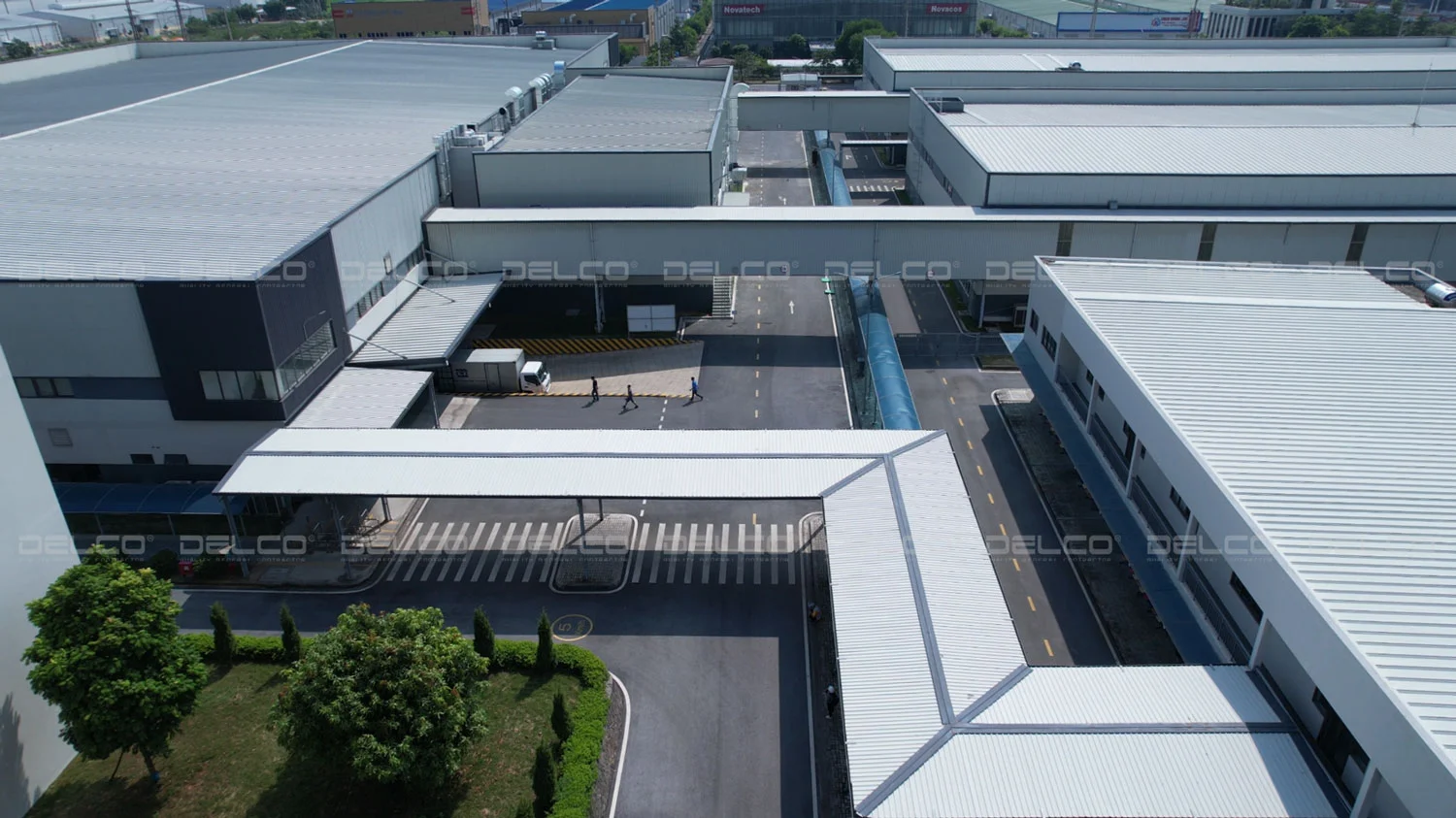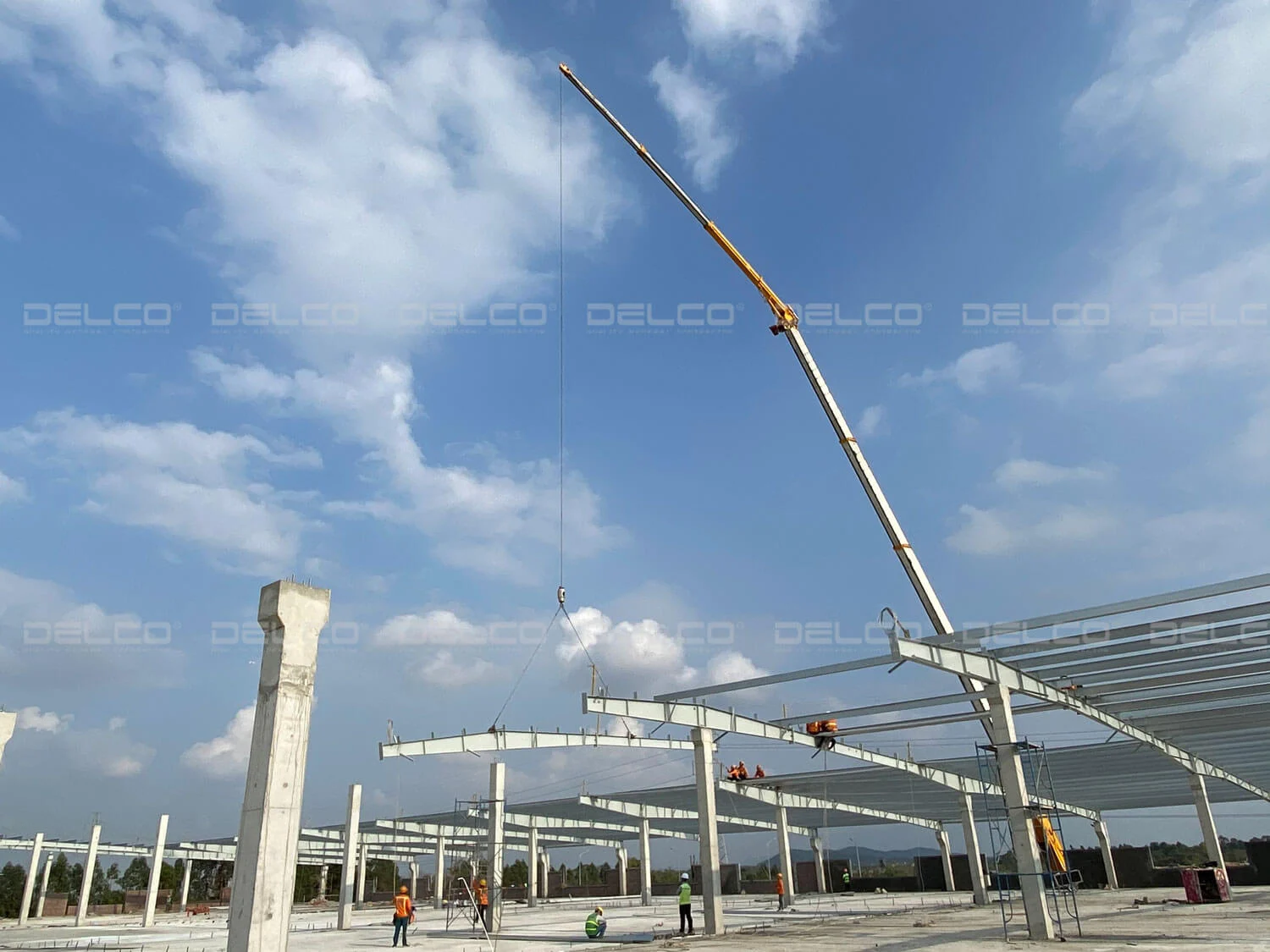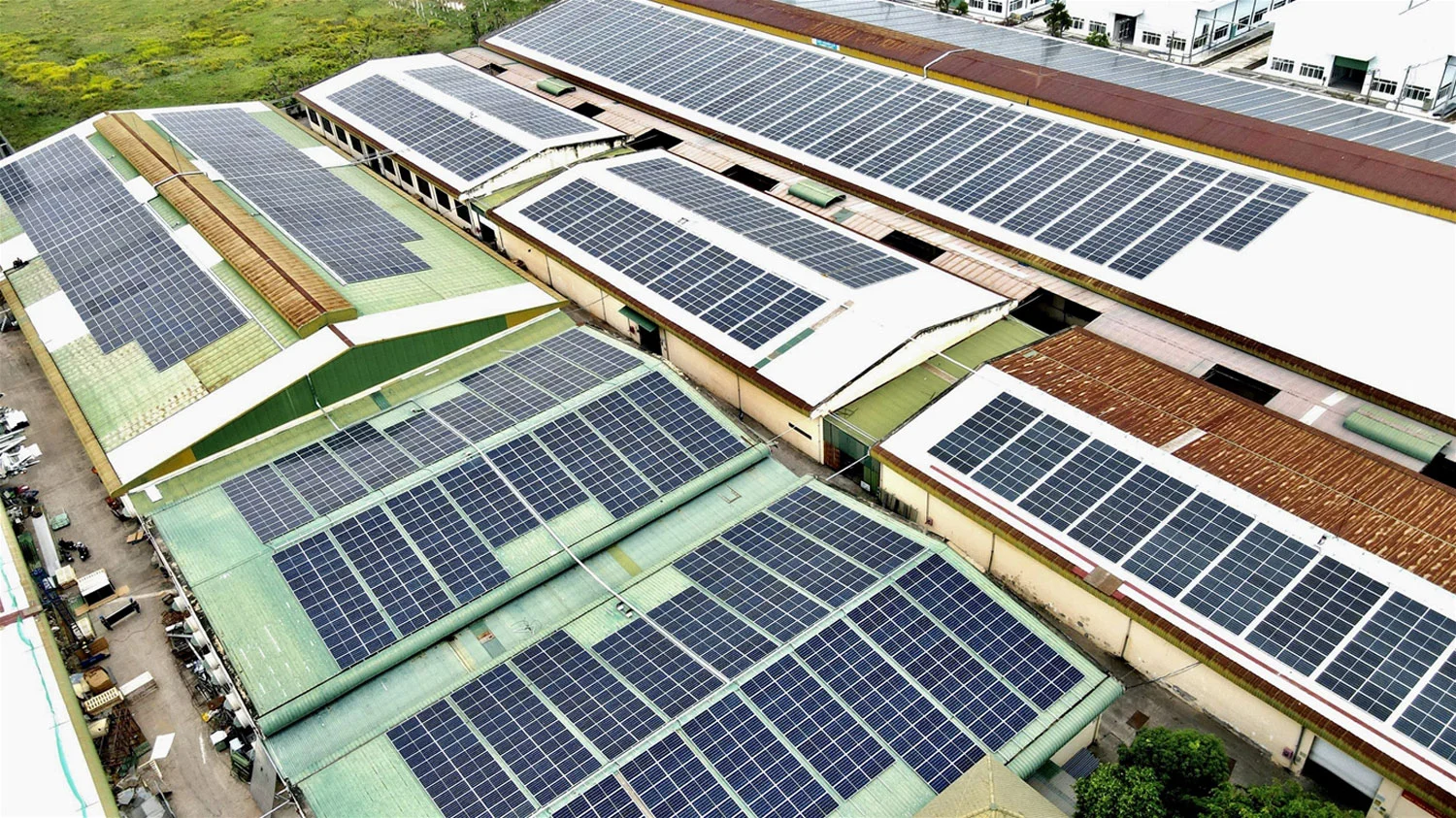The design and decor of factory offices not only reflect the unique identity of each business but also create a comfortable working environment, enhancing employee focus and creativity and boosting work efficiency.
Architectural design trends for factory offices
Open workspaces
Open workspaces continue to be a trend in 2024. By reducing the number of walls and partitions, this design optimizes space efficiently, creating a modern and airy working environment that allows factory employees to move around easily and facilitates communication and interaction.
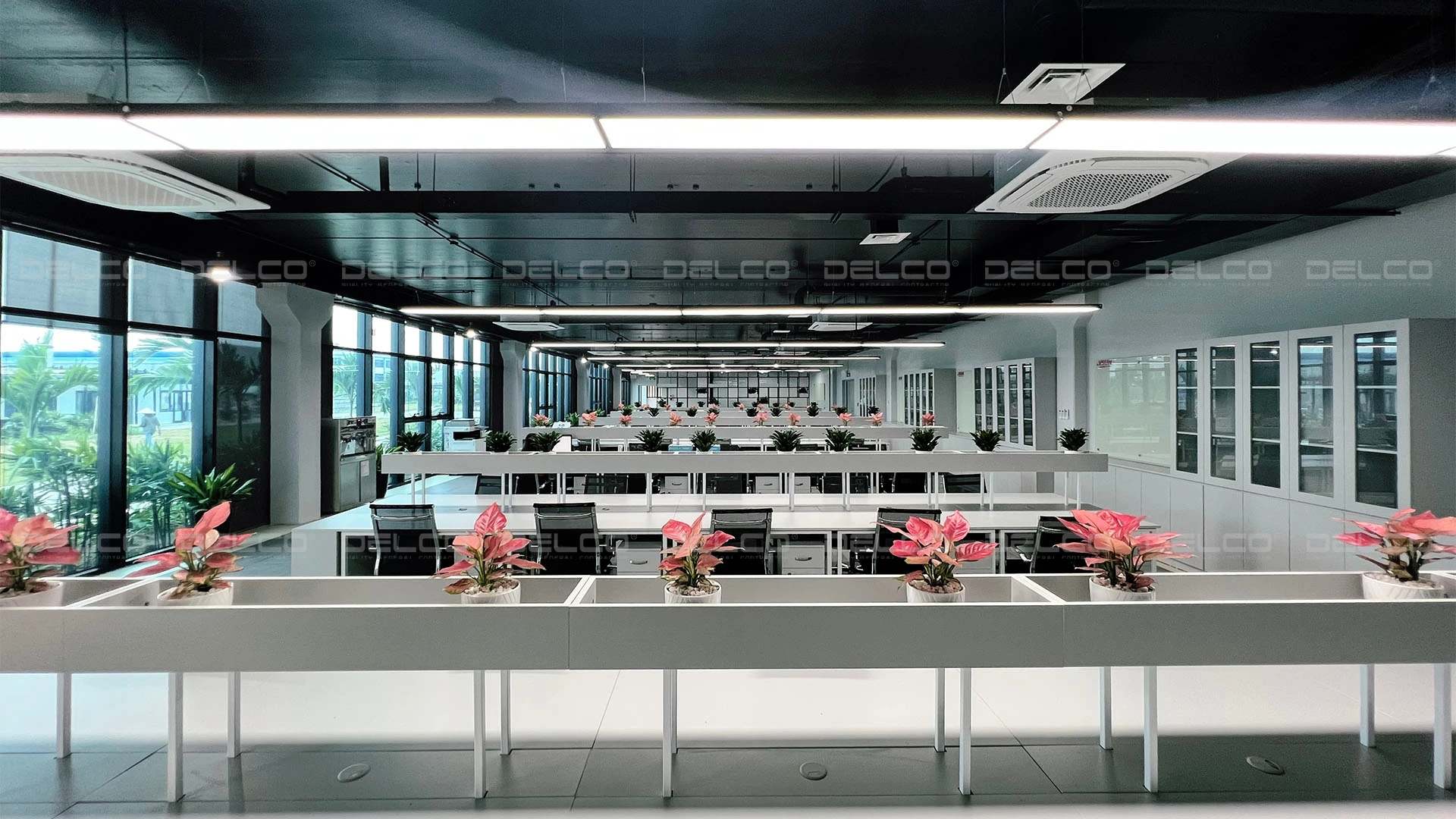
Rest and common space

Rest and common space for employees have become a hallmark of modern office culture, connects employees and enhances their mental well-being. Depending on the office size and business characteristics, companies can arrange canteens or common areas such as smoking lounges, reading areas, etc., to help employees relax, recharge, maintain work-life balance and increase productivity.
Large meeting rooms
The trend of setting up large conference and training rooms with ample seating is being adopted by many businesses. This approach provides space for factory events and enables companies to hold important meetings and training sessions with a large number of employees.
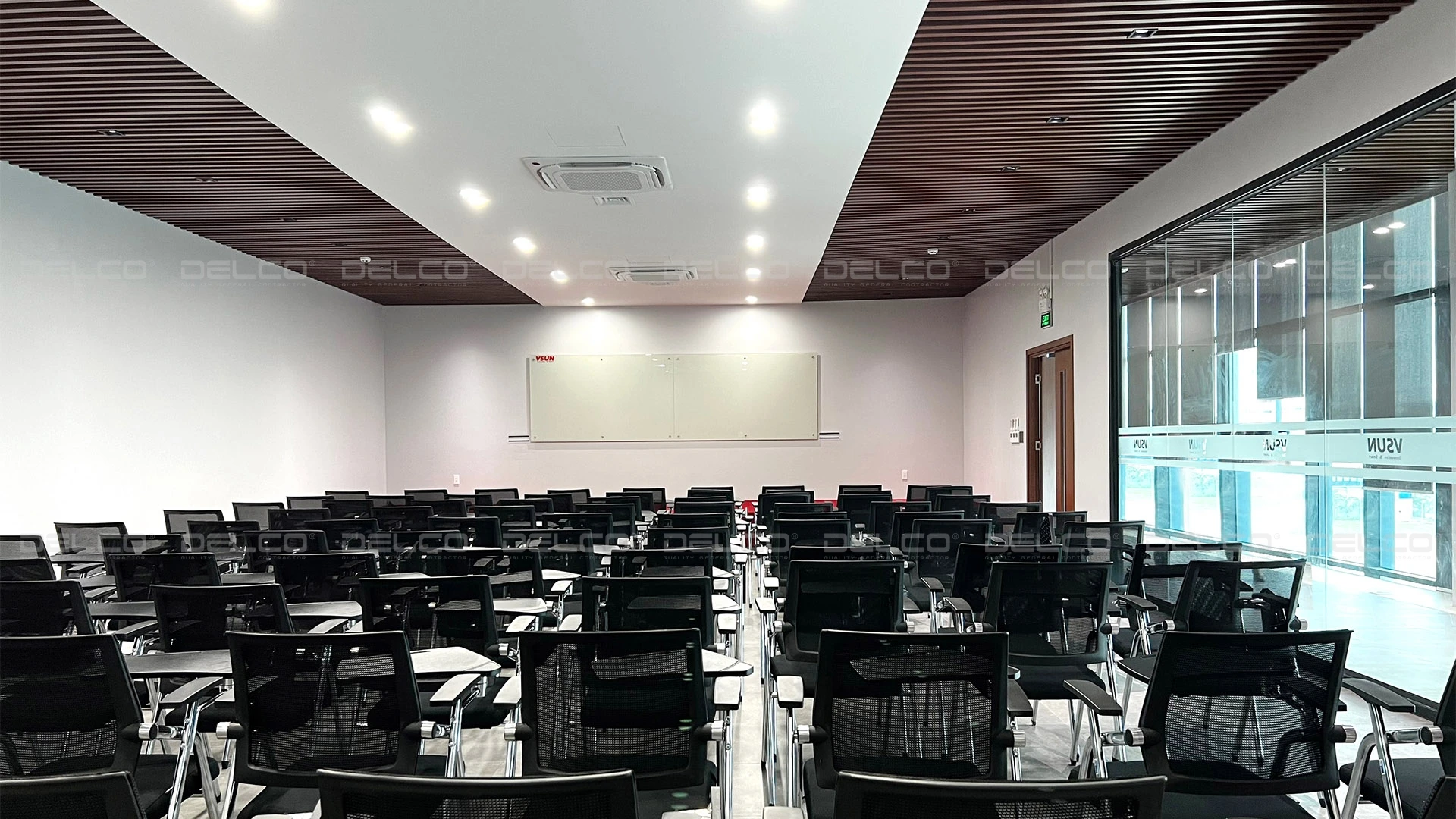
Movable partitions
Movable partitions have become a popular choice for many businesses due to their ease of installation, mobility and ability to adjust space as needed, thereby saving workspace. Additionally, some modern movable partitions offer effective soundproofing, making them ideal for offices located next to factories. These partitions help block out noise from production areas, creating a quiet environment that allows office workers to focus on their work.
Finishing material trends
Lightweight aluminum ceilings
Aluminum ceilings offer excellent electrical insulation, thermal conductivity and fire resistance due to their electrostatic coating and external thermal insulation film. Beyond their high aesthetic value, these ceilings are highly durable, lightweight , making transportation, construction, and installation processes easier, significantly reducing construction time.

Green materials
Using green materials, derived from natural and environmentally friendly sources such as eco-friendly paint, wood fiber wall tiles, etc., is inevitably becoming a trend in industrial office design. Green materials not only help save energy and resources but also protect workers’ health and the environment, aligning with the global trend towards sustainability.
Soundproofing and noise reduction materials
Soundproofing and noise reduction are crucial for helping employees concentrate and work efficiently. Therefore, selecting materials with optimal sound absorption and insulation capabilities is essential. Businesses can use soundproof wall tiles, acoustic furniture such as sound-absorbing fabric-covered chairs and tables, acoustic lighting and acoustic panels to ensure a quiet workspace. Additionally, installing ceiling-mounted acoustic baffles that redirect sound waves to prevent echoing within the room is an effective solution, reducing noise and enhancing the aesthetic appeal of the office.
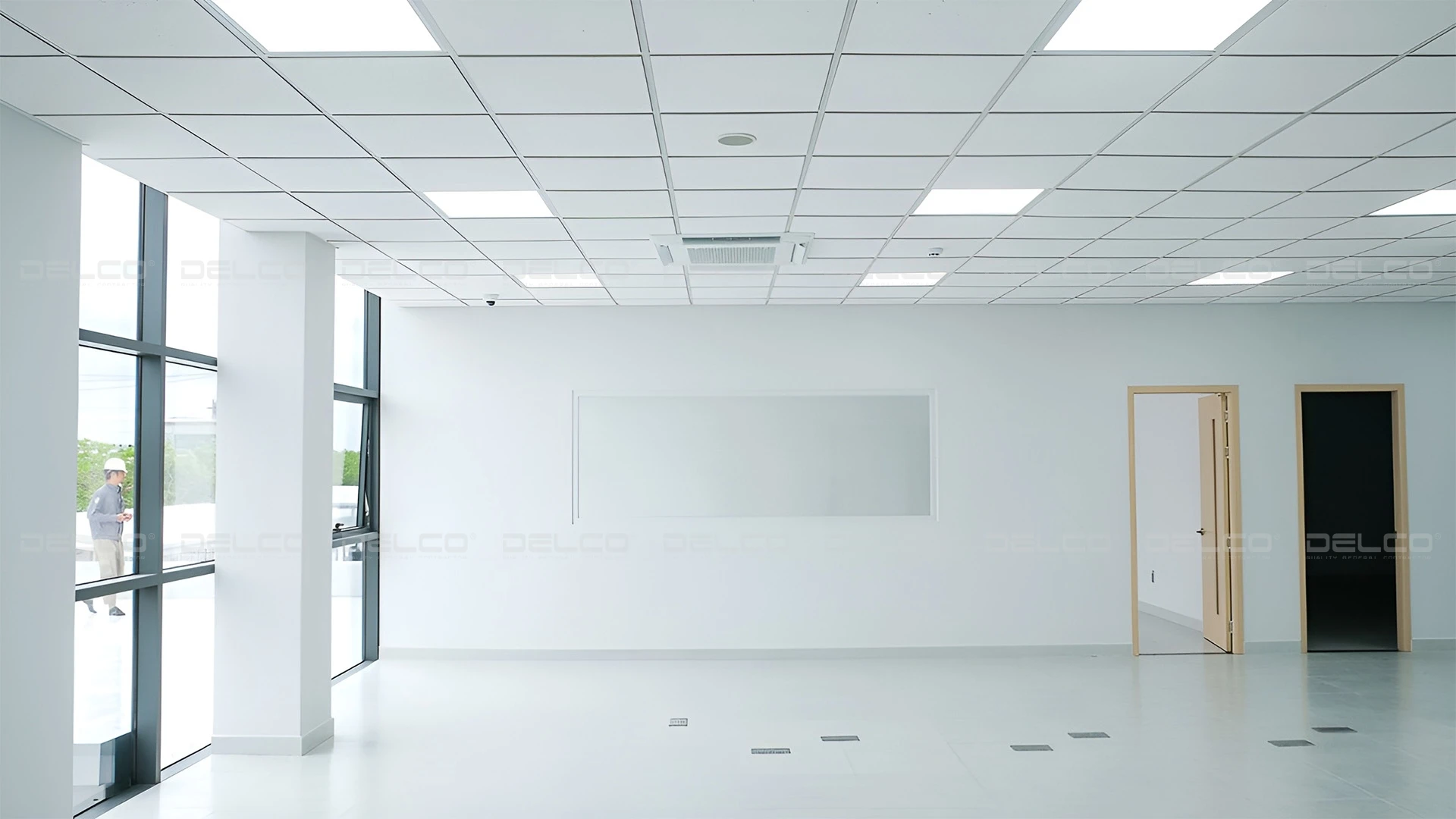
Acoustic ceiling at DORCO Living Vina factory, the project DELCO worked as the General Construction Contractor.
Office interior design and decor trends
Green office design
The trend of green office design contributes to creating an airy workspace, providing fresh air and a comfortable environment for employees. Green office style typically optimizes natural light and uses plants to decorate the office, which helps absorb dust, heat and radiation from electronic devices. Additionally, green offices prioritize furniture made from natural materials and environmentally friendly decorative items such as wood, rattan and bamboo…

Industrial design
As one of the interior styles imported from Europe, the industrial style features a simple, raw design characterized by exposed ceilings, beams and pipes. The furniture is arranged in a minimalist, tidy manner to ensure a spacious and airy environment. This style often prioritizes materials like concrete, iron, steel and wood, choosing brick walls, raw concrete walls, stone-clad walls instead of regular painted walls. Common colors used in industrial interior design include white, gray, black, dark brown wood and navy.
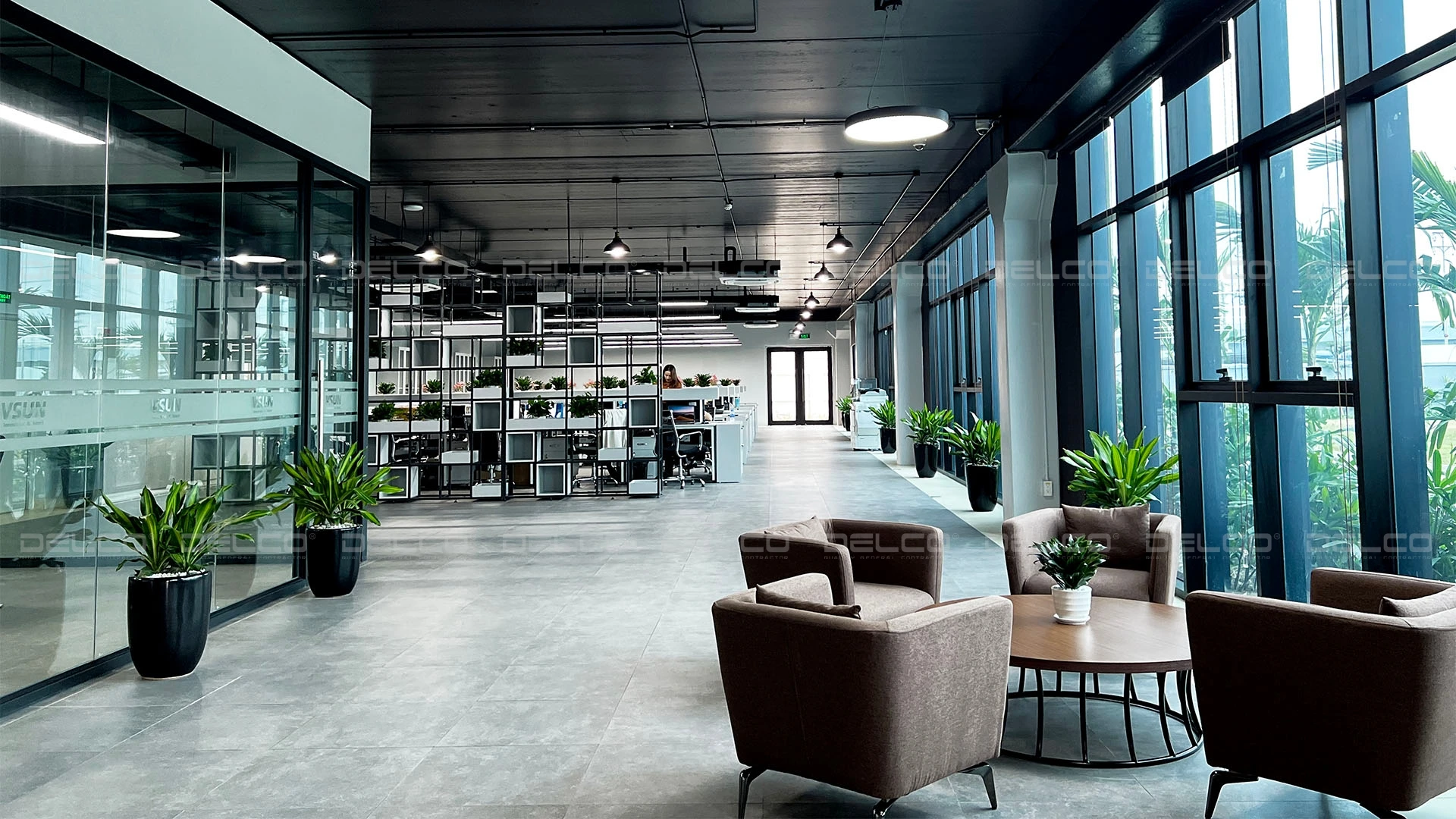
Color block design
Color Block office interior design combines contrasting color blocks with high intensity, creating a unique and striking aesthetic that enhances the visual appeal of the office space. With eye-catching, visually stimulating colors, this style boosts employee creativity, fostering a dynamic and comfortable work environment that helps to increase productivity.

Minimalist design
In contrast to the Color Block design, the Minimalist design focuses on arranging tidy work areas, using minimal furniture and selecting furniture with simple designs to maximize office space. This design also limits the use of many colors, often favoring basic tones like white, beige and gray. These colors help reflect light, making the office feel more spacious and brighter.This style is quite popular due to its low construction and decoration costs while still ensuring a spacious and comfortable work environment for employees.

See more: Top most popular finishing materials in Vietnam
See more: 2024 Smart Factory Trends in Vietnam


